More Retail Automation, Less Conversation—Global Trends Show Where Shoppers Want Tech and Where They Don't
Automated technologies, from self-checkout kiosks to contactless payment, are designed to help retail business owners provide the experiences customers want: fast, efficient, and convenient shopping, according to more than 2,000 global consumers in Software Advice’s 2024 Automated Customer Experience Survey.*
But while some technologies improve the customer experience, others have yet to deliver. Three distinct trends in consumer expectations and technology indicate that by investing in the right mix of software and customer-facing employees, retailers can deliver the customer experience people across regions demand today.
Key insights:
73% of global consumers want to get in and out of the grocery store as quickly as possible—52% say the same of other retail stores.
74% of global consumers think automated checkout is acceptable in retail and grocery stores, while a minority find it acceptable to automate returns processing, cleaning and sanitation, and security.
When shopping in physical stores, 62% of global consumers pull out their smartphones to compare online prices to what they see on shelves.
Just 35% of global consumers find it acceptable for businesses to use automation technology instead of humans for returns processing.
Trend #1: Consumers want more speed and efficiency when shopping in physical stores
Today’s consumers are on a mission when they shop in-store: To get in and out as quickly as possible by finding what they need fast and avoiding time-consuming interactions with other people.
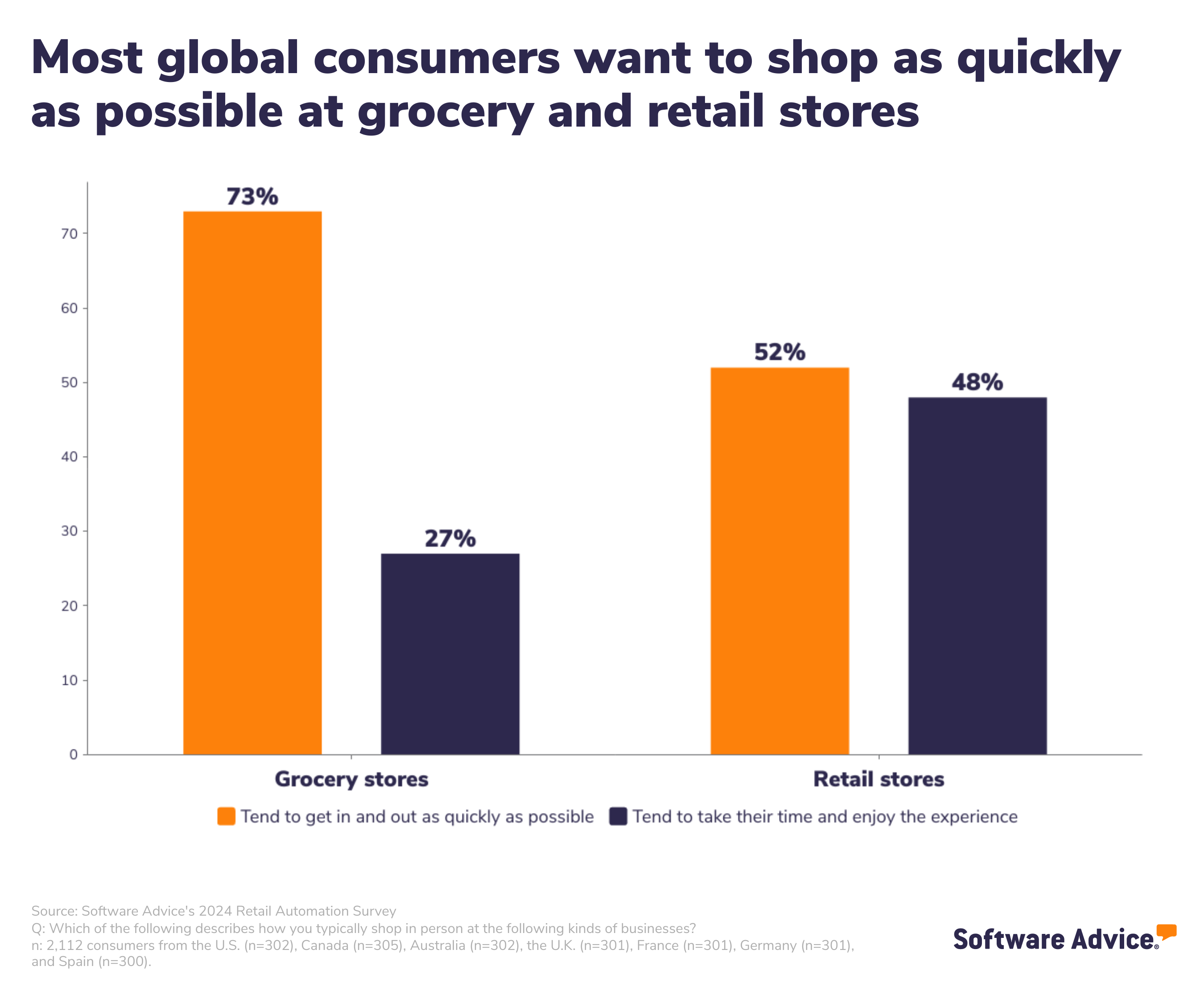
A majority (72%) of consumers are loyal users of automated technologies that have become ubiquitous in retail stores: Self-checkout, curbside pickup, and contactless payment.
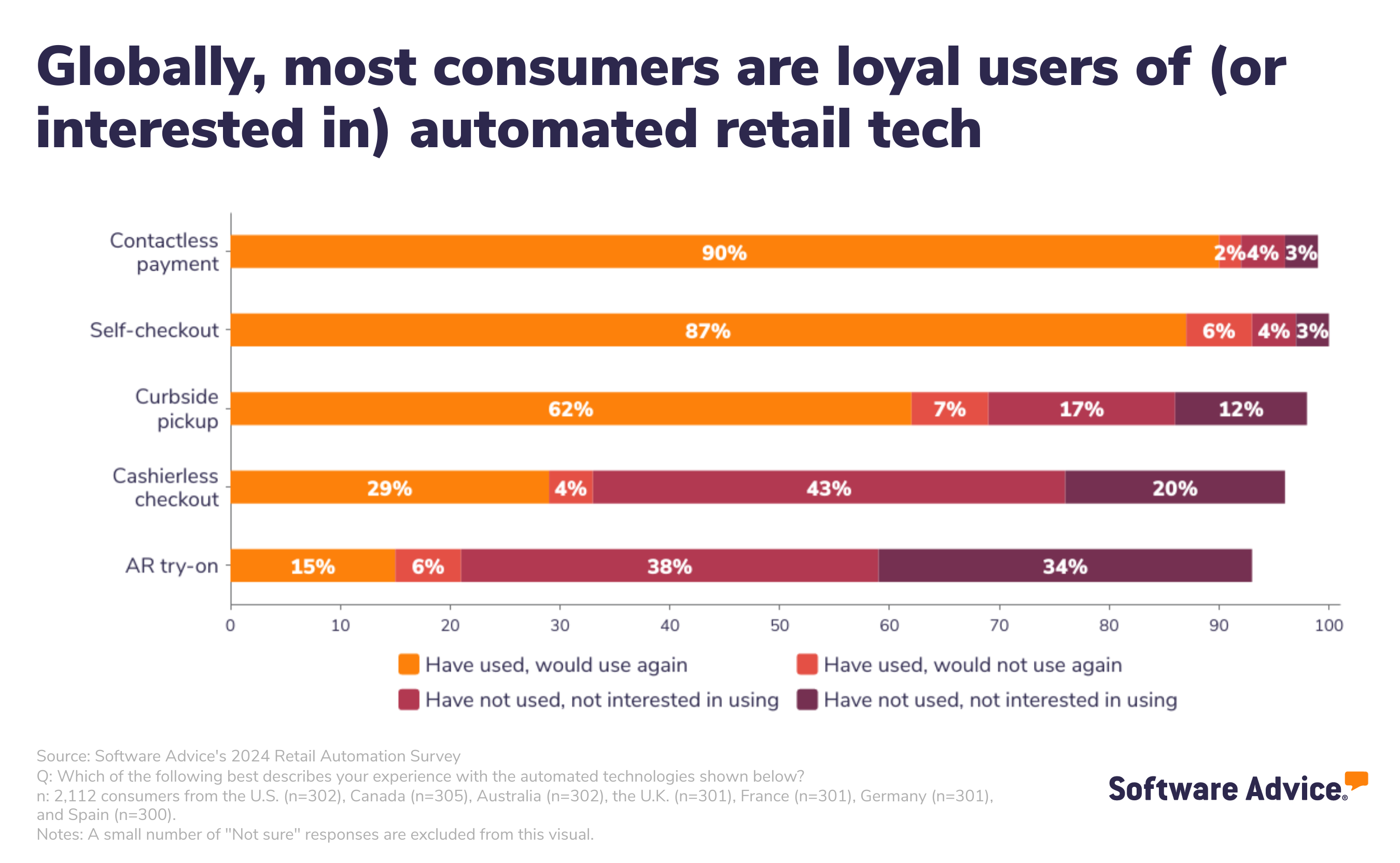
While fewer than half have experienced the most cutting-edge retail technologies such as cashierless checkout and augmented reality try-on tools, they show strong interest in doing so. Consumers believe automated tech has brought speed and convenience to in-store shopping, and many are ready for more to be introduced.
Today’s consumers lead busy lives and tend to treat shopping trips as chores to be done quickly and efficiently. When asked what would improve their in-person shopping experience, top suggestions are faster checkout, faster returns processing, and the ability to find the products they need faster.
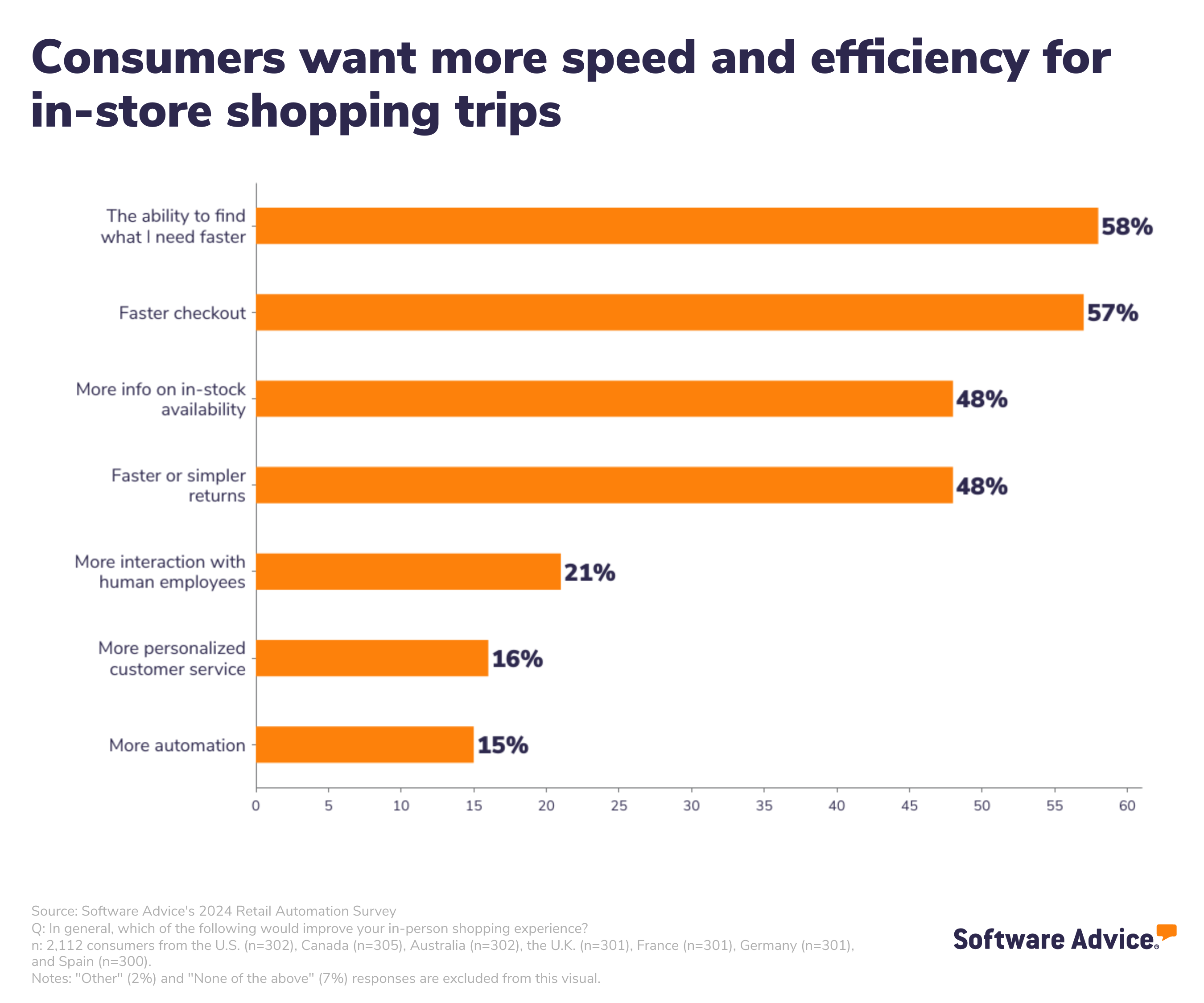
Trend #2: Today’s customer values autonomy and privacy
Most modern shoppers don’t have time for chit-chat, and they don’t want any help. Globally, today’s average consumer rarely, if ever, seeks or accepts help from store associates. Instead, they preferentially seek out in-store automation tech to avoid interacting with others when shopping.
For instance, consumers now do their own extensive product research before making purchases. When browsing the aisles of a physical store, they would rather reach for their smartphone to find products, read reviews, and compare prices online than ask another person for help.
But while consumers believe technology is what makes their in-store shopping experiences more efficient and safe, they’re still concerned about how that technology may use and protect their personal data.
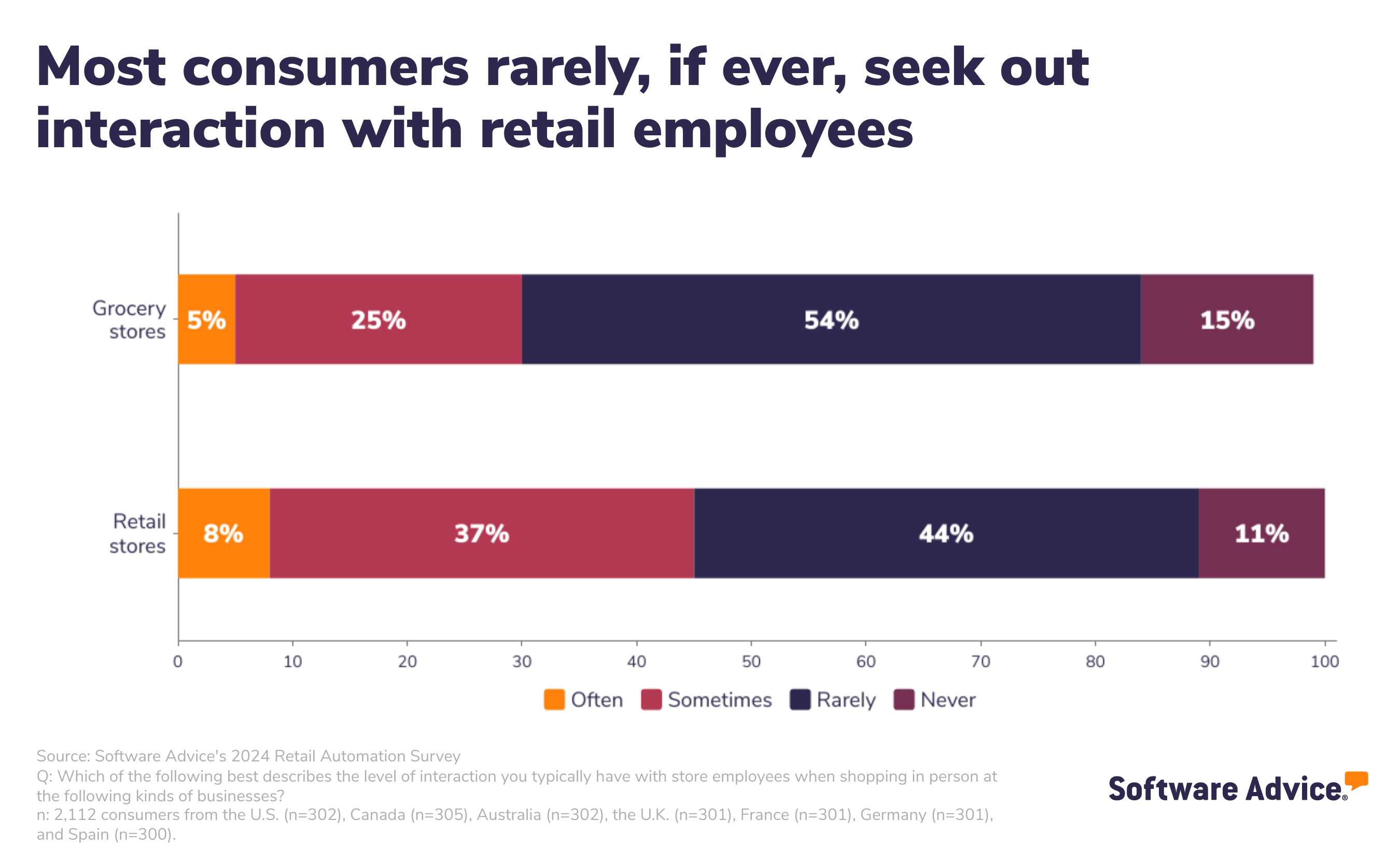
Most global consumers prefer self-checkout to staffed checkout when they need to make a purchase quickly, if they want privacy, or to avoid conversation. But with the recent proliferation of AI-equipped security cameras at self-checkout kiosks, many customers are aware that their purchases, and their likenesses, are never truly private, even when they scan and bag their own items. It typically isn’t clear whether the data captured by those cameras is recorded and stored, let alone how it’s used beyond its apparent security purpose.
The following valid concerns come to mind regarding data privacy and self-checkout cameras:
If self-checkout footage suggests a customer shoplifted or committed credit card fraud during their transaction, will their mugshot be flagged for future visits? Could the retailer share their likeness and personal information with law enforcement?
Should consumers accept the idea that retailers view them as ticking time bombs for retail shrink—guilty until proven innocent?
What if the store uses or sells their likeness and purchase history for the sake of targeted advertising?
The emphasis on speed, autonomy, and limited human interaction suggests a near future of fully automated stores and restaurants that offer lightning-fast service and AI-driven personalization. Such businesses already exist, with more in development, though they aren’t always what they seem. [1,2,3]
Current customer pain points with automated tech, including data privacy, as well as consumers’ continued preference for the human touch in areas of customer service that require a degree of critical thinking and personalization, suggest we may never fully blur the line between physical and digital experiences in the way Silicon Valley has predicted.
Trend #3: Humans are still irreplaceable for returns processing, personalization, sanitation, and security
Today’s consumers think automation is great for retail, but in a fairly limited scope. In general, modern shoppers embrace automation for checkout and locating items in stores. They appreciate the convenience of self-checkout and curbside pickup, regularly use contactless payment, and they are already using or are interested in using cashierless checkout.
However, most consumers balk at substituting automation for human employees when it comes to providing personalization, empathy, and safety.
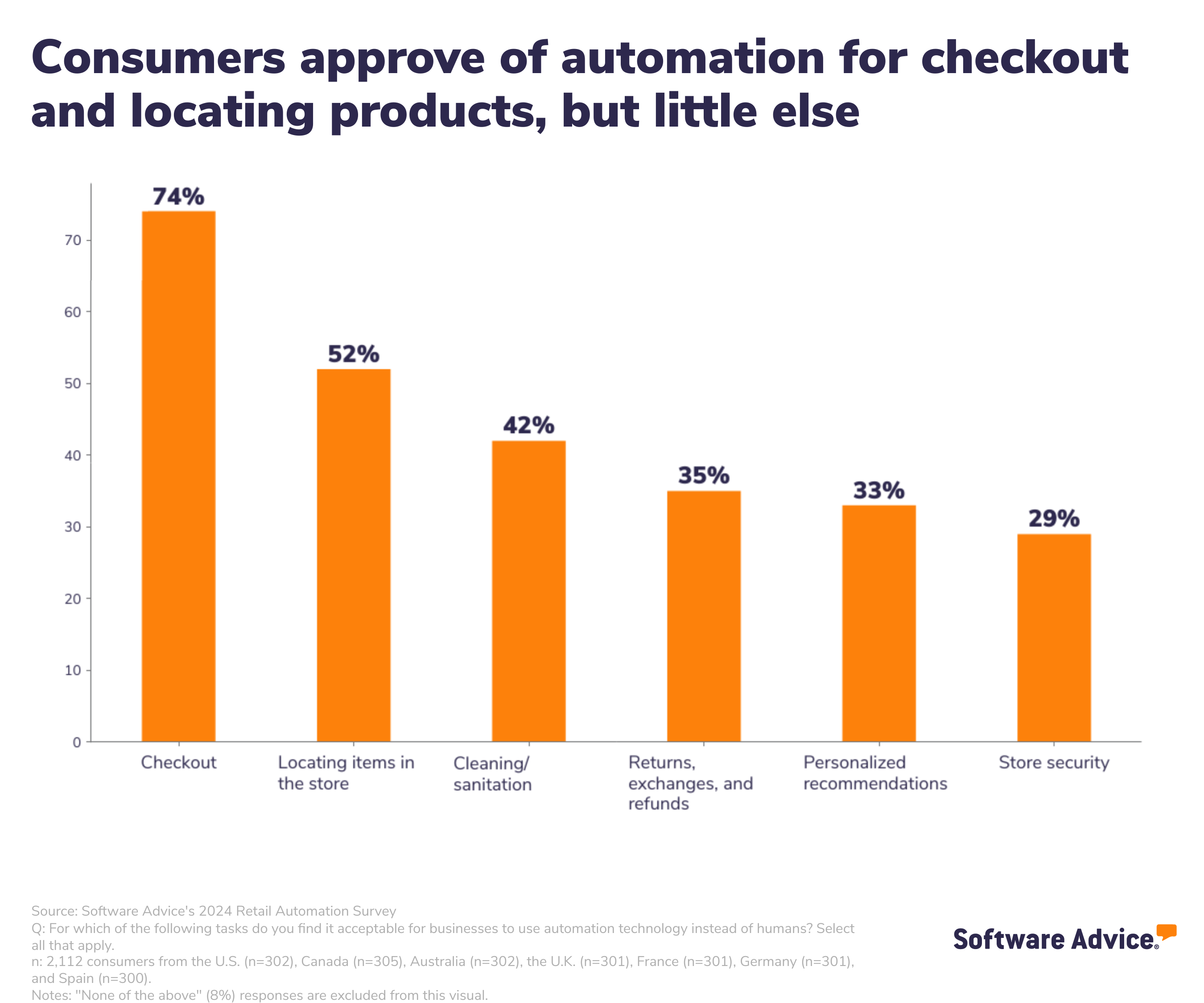
For example, take personalized recommendations. With the rise of ecommerce, an entire industry has emerged with the aim of using powerful algorithms to pinpoint the exact products that appeal most to an individual customer, based on ever-increasing sources of data: Their purchase history, behaviors and interests, demographics, the media they consume, and even how they speak. The technology is effective, and previous research from Software Advice** shows that many consumers are willing to share personal information in exchange for AI-driven, personalized shopping. [4,5]
Even so, just 33% of global consumers think it’s acceptable for businesses to exclusively use automated tech to deliver personalized recommendations. Another 35% want humans to handle returns, exchanges, refunds, store security, and maintenance.
The message to retailers is clear: Customers don’t find it acceptable for stores to rely on robots and software to handle complex problem-solving tasks, or tasks that keep people and spaces clean and safe. Small businesses should be intentional about recruiting and training employees that can provide the human touch—empathy and critical thinking about complex problems—to provide the experience today’s customer wants.
Small retail businesses should invest more in people and tech in the places that matter to shoppers
Though consumers say they want less interaction and are willing to use more automated tech in retail stores, it’s still important for business owners to create a safe and supportive environment by providing excellent customer service. This is especially true for businesses serving older or rural populations: Both of these groups are less interested in automation, encounter more issues using emerging retail tech, and are more likely to prefer a higher degree of interaction with customer service employees.
Small retail businesses should invest in software that automates checkout and provides a variety of payment and pickup methods. Some examples include:
An ecommerce website or mobile app that shows product availability, location in the store (e.g., women’s clothing department; aisle 10), and pickup options (e.g., curbside).
Mobile checkout terminals so store associates can assist customers with purchases and reduce wait times.
A variety of payment methods, including contactless payment, so customers can pay with their digital wallet or phone instead of card or cash.
Retailers should also prioritize hiring high-quality employees who can provide exceptional customer service, handle returns and refunds quickly and empathetically, and keep customers and facilities safe and clean. Using the right recruiting software can help you find the right front-of-house team.
Not sure where to start with automation technology for your retail business? Try chatting one-on-one with an advisor from Software Advice for free to get personalized help and recommendations.
Sources
The rise of robo-retail: Who gets left behind when retail is automated?, The Conversation
Have It Your Way! McDonald’s first fully automated restaurant —with no human contact in Fort Worth, KXAN
An ‘AI’ fast food drive-thru is mostly just human workers in the Philippines, The Verge
Powered by A.I., Company Aims to Make Selling Easier for Retailers, The New York Times
Coca-Cola Leverages AI Personalized Recommendations to Boost B2B Sales, PYMNTS
Survey methodology
*Software Advice's 2024 Retail Automation Survey was conducted online in February 2024 among 2,112 respondents in the U.S. (n=302), Canada (n=305), Australia (n=302), the U.K. (n=301), France (n=301), Germany (n=301), and Spain (n=300). The goal of the study was to learn how retailers and restaurants can address customer pain points with automation to ensure technology is adding efficiency to the customer experience. Respondents were screened for their experience with automation technologies at retail businesses and restaurants.
**Software Advice's 2023 AI Shopping Security Risks Survey was conducted in July of 2023 among 1,000 U.S. consumers to learn more about their attitudes and behaviors regarding artificial intelligence tools in online shopping. Respondents were screened for online shopping frequency; all respondents shop online at least once per month.